Alireza Torabian
TORONTO !
As a machine learning researcher at York University, I am focusing my research on the field of machine learning calibration. With a strong foundation in mathematics, I have a comprehensive understanding of the theories and principles behind machine learning. I have completed a number of projects in various areas, including deep learning, computer vision, adversarial machine learning, and natural language processing. My current research is in machine learning calibration under the supervision of Dr. Ruth Urner.
Experience
York University
In the field of Conformal Prediction.
Exploring the usefulness of various conformity measures in obtaining more informative prediction sets and confidence intervals.
National University of Singapore
Data Privacy and Trustworthy Machine Learning Research Lab
Developed a plugin that will obscure images in order to increase privacy that achieved 35% success rate.
Performed a black‐box adversarial attack on facial recognition using projected gradient descent with momentum in latent space of FaceNet (an Inception-Resnet model).
In face detection attack, the overlap between the detected areas by SSD MobileNet V1 and the actual faces is minimized using PGD.
Image augmentations are used to apply the attacks on black-box models.
GITHUB REPO REPORT SAMPLE OUTPUTS
Diaalog Company
Developed a Persian question answering system in Python Tensorflow.
LDA is used to cluster similar questions. To expand our dataset, we utilize the answers to questions in the same cluster interchangeably.
LSTM Seq2Seq model with Luong-style attention mechanism is used to generate an answer to a question.
Amirkabir University of Technology
Cognitive Robotics Lab
Object detection task is performed to detect victims using the YOLO (You Only Look Once) algorithm. YOLO has a lower coverage of bounding boxes compared to SSD (Single Shot Multibox Detector), but it is faster, which is important for our real-time application.
Developed an autonomous exploration algorithm and path planner for robots to help them explore a map simultaneously.
CRLab Page
Dropout Developer Team
Co-founder and a member of Dropout (F.K.A. Lost Soul) games. Developing android games using Java in Android Studio.
Education
Amirkabir University of Technology
GPA: 3.9/4 (18.25/20)
In the top 10% among 101 students
Thesis:
Design and Implementation of an Automatic Question Answering System for Answering Simple Persian Questions
Advised by Dr. Saeedeh Momtazi
THESIS
Allame Helli High School
Affiliated with the National Organization for Development of Exceptional Talents (NODET)
GPA: 19.64/20
Projects
A graph autoencoder has been applied to an actor's network to map the actors to a latent space, using Keras in Python.
Achieved 99.46% accuracy on link weight prediction task for weights between 0 and 1.
An alternative actor is found by searching the latent space using a K-d tree, and a co-star is suggested based on the predicted weights in the autoencoder model's target network.
ML Reproducibility challenge of the paper "Autoencoding Keyword Correlation Graph for Document Clustering".
Applying a graph autoencoder to a graph of keywords to map each document to a latent space which is used for clustering.
My bachelor thesis that was building a question answering system based on a knowledge-base in Python.
SVM and CNN classification models used to classify the question type achieved 96% accuracy and F1‐score of 92.7%.
Implementing algorithms to optimize a convex problem.
Some unconstrained optimizations such as line search and trust region methods, and some constrained optimizations such as log barrier.
Skills
| Languages: | Python, Java, C++, JavaScript |
| Frameworks and Tools: | Tensorflow, PyTorch, OpenCV, Keras, Numpy, Pandas, Scikit-learn, NLTK, JAX |
| Databases: | MySQL, PostgreSQL, SPARQL, MongoDB |
| Cloud: | AWS |
| Other Tools: | Git, Unix shell, Jupyter |
| Math: | Machine Learning Theory, Statistics & Probability, Signal Proc., Stochastic Processes, Convex Optimization |
Interests
My favorite hobbies are hiking, camping, and travelling to new cities with photography to remember the moments. I'm interested in music and am learning to play piano. Playing board games, frisbee, and table tennis have always been my favorite entertainments.Awards
- York University Fellowship, C$62,500 for my master’s studies, 2021-2022
- Second Place in the rescue simulation virtual robot league at RoboCup Nagoya, Japan, 2017
- Ranked top 0.5% in the nation-wide Iranian university entrance exam among 180,000 participants , 2015
- Member of National Organization for Development of Exceptional Talents (NODET), 2011-2015
